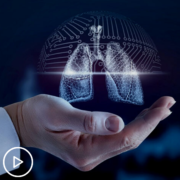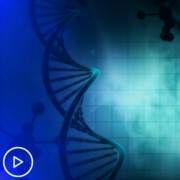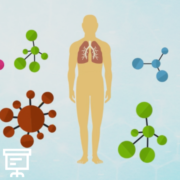OVER A SPAN OF 15 YEARS, Liza Bernstein was diagnosed with three separate primary, early-stage breast cancers. Even though she was treated by the same oncologist throughout, the treatments she received varied with each diagnosis.
Bernstein, who lives in the Los Angeles area, was first diagnosed with hormone receptor-positive breast cancer in 1994, when she was 29 years old. She recalls that her doctors were pleased to be able to do a lumpectomy, only removing part of the breast, instead of a mastectomy as would once have been standard. However, her surgeon removed about 20 lymph nodes from her armpit, and she received both radiation and chemotherapy.
In the course of receiving her second diagnosis, a hormone receptor-positive cancer in her opposite breast, in 2005, Bernstein underwent a sentinel lymph node biopsy, a less invasive procedure that requires surgeons to remove only a few lymph nodes in areas where the cancer is most likely to have spread.
Bernstein was also able to get testing with a product called Oncotype DX, which measures gene expression in breast tumors and helps estimate the likelihood that chemotherapy will prevent an early-stage, hormone receptor-positive cancer from recurring. The test, released in 2004, helped Bernstein and her oncologist make the difficult decision to skip chemotherapy in 2005, due to little predicted benefit. Bernstein received a lumpectomy, radiation and the hormone therapy tamoxifen. Conversely, when she was diagnosed with another hormone receptor-positive cancer in 2009, genomic tumor testing helped them decide to include chemotherapy, along with a double mastectomy and tamoxifen, in her treatment.
Advances in cancer research can mean making patients’ treatment more onerous and complex. But some of the changes in Bernstein’s breast cancer treatment over the years reflect de-escalation—the process of decreasing the intensity or duration of a treatment, thus reducing side effects and cost, while maintaining the treatment’s effectiveness.
Today, researchers are investigating whether they can identify patients—using genomic tumor testing, imaging of the cancer or other methods—who can receive less intense treatment. Treatment de-escalation aims to spare patients the burden of unnecessary treatments and side effects.
“The key is we want to give people the right treatment that they need without treating them excessively, which just produces too much toxicity,” says Eric Winer, a medical oncologist and chief of the Division of Breast Oncology at the Dana-Farber Cancer Institute in Boston.
Treating the Right Patients
Treatment de-escalation has been successful primarily in cancers where the survival rate is high. “When you have a situation where mortality from a given malignancy is high, then it’s pretty hard to think about backing off [from treatment],” Winer explains.
The effects of treatment can last long after chemotherapy or radiation is completed. For example, 87% of people in the U.S. diagnosed with Hodgkin lymphoma, which until the 1960s was usually fatal, live five years or more. “The issue for this group of people, who are often diagnosed in their 20s and 30s, is that they have a long life ahead of them,” says Peter Johnson, a medical oncologist who specializes in lymphoma at University Hospital Southampton in England. The radiation and chemotherapy typically given for Hodgkin lymphoma can result in serious side effects, including heart disease, second cancers and infertility.
Over time, doctors have adopted techniques for delivering radiotherapy to Hodgkin lymphoma patients that increasingly spare normal tissues from damage, Johnson says. Most recently, researchers have learned that they can perform a form of imaging, called 18F-fluorodeoxyglucose PET, to determine early on whether a patient’s Hodgkin lymphoma is responding to chemotherapy. If the scan indicates a good response, the patient may be able to skip later radiation therapy or receive a less intensive chemotherapy regimen.
“In some ways, it’s a reflection of how successful modern oncology has been that we’re thinking about these things,” Johnson says of the topic of de-escalation.
The rise of genomic testing, among other factors, has contributed to a decline in chemotherapy use for patients with early-stage breast cancer whose disease is driven by hormones. With Oncotype DX and similar tests, patients with hormone receptor-positive, HER2-negative breast cancer can learn how likely they are to benefit from chemotherapy. Their score can help determine whether their drug treatment after surgery should include both chemotherapy and hormone therapy or whether just hormone therapy is enough.
Researchers are investigating de-escalation strategies for patients with early-stage HER2-positive breast cancers as well. These patients are often treated with HER2-targeted therapy and a multidrug chemotherapy regimen. Winer’s research shows that patients with small HER2-positive cancers that have not spread to the lymph nodes can safely use a de-escalated chemotherapy regimen that includes just one drug, paclitaxel, alongside targeted therapy.
Challenges of Stepping Back
Despite some successes in de-escalation, it can be easier to intensify treatment than to take treatment away. This is partly because it is difficult to prove that taking away treatment is not going to harm patients—a different statistical challenge than showing that a therapy is significantly better than standard care.
For example, in 2004, researchers discovered that patients with stage III colon cancer lived longer if oxaliplatin was added to their chemotherapy regimen. The additional chemotherapy drug can lead to peripheral neuropathy, and the effects are cumulative as therapy continues. An international consortium of researchers published a study in the New England Journal of Medicine on March 29, 2018, pooling the results of six randomized clinical trials that included 12,834 participants. The trials investigated the practice of shortening chemotherapy after surgery from six to three months for these patients.
“We thought with such a large number it would be very easy and we’d get a clear answer, [but] we haven’t got as clear an answer as we thought we would,” says Timothy Iveson, a medical oncologist at University Hospital Southampton who co-authored the study.
The study did not meet pre-specified statistical benchmarks to determine that a shorter period
of chemotherapy was not worse than standard chemotherapy for the patients in the trial in general. However, the survival difference between patients using shorter versus longer chemotherapy (six months versus three months) was small, Iveson says, and the decrease in side effects with shorter chemotherapy was large. And for some patients, treatment for three months was sufficient. Cancer treatment guidelines now recommend the shorter chemotherapy regimen as an option for certain patients with low-risk stage III colon cancer.
New information about cancer subtypes can also spur de-escalation. But even when it’s clear that de-escalation is necessary, it can take time to settle on the right strategy, as shown by the experience of researchers trying to back off treatment for head and neck cancer caused by the human papillomavirus (HPV). “There’s been an epidemic of oropharyngeal cancers that are related to HPV,” explains Joshua Bauml, a medical oncologist at the Hospital of the University of Pennsylvania in Philadelphia. “These cancers have a much higher cure rate, and that’s wonderful, but the issue is that our treatment paradigm is still based upon older cancers with a different biology.”
Standard treatment for patients with advanced head and neck cancer—originally developed for patients with smoking- and alcohol-associated cancers—involves some combination of surgery, radiation and chemotherapy. But these treatments can cause troubling side effects, including difficulty swallowing, dry mouth, problems with speech and changes in taste.
One approach for reducing toxicity of chemotherapy for these patients was to replace the chemotherapy drug cisplatin with the targeted therapy Erbitux (cetuximab), in an attempt to spare patients the side effects that cisplatin can cause when combined with radiotherapy. However, recent clinical trial results have shown that patients with HPV-positive oropharyngeal cancer treated with Erbitux have shorter survival than those treated with cisplatin and have similar rates of side effects, indicating that this is not a good de-escalation strategy.
Early trials of approaches to reduce doses of radiation or chemotherapy for patients with HPV-related oropharyngeal cancer have shown promise, Bauml says. However, he urges clinicians to wait for further data before adopting new protocols for HPV-related oropharyngeal cancer. “If a head and neck cancer metastasizes, it is incurable,” he says. “It’s really essential that when we move towards treatment de-escalation, this is done through robust clinical trials.”
Getting Targeted
The term de-escalation is used most often to describe efforts to reduce harms from old modes of therapy, including surgery, radiation and chemotherapy. But researchers are also working to understand the right doses of medication for patients being treated with newer targeted therapies and immunotherapies.
A study in the July 2018 issue of Cancer, for instance, showed that Sprycel (dasatinib), a type of targeted therapy called a tyrosine kinase inhibitor, is effective at a reduced dose in treating chronic myeloid leukemia (CML). The lower dose appears to cause fewer dangerous side effects, such as buildup of fluid near the lungs, and costs around half as much. Other tyrosine kinase inhibitors have also been shown to be effective in treating CML at reduced doses, says study co-author Hagop Kantarjian, an oncologist who specializes in leukemia at the University of Texas MD Anderson Cancer Center in Houston.
Traditional methods of determining doses for cancer drugs aren’t always ideal for dosing targeted therapies, Kantarjian explains. Clinical trials for chemotherapy ramp up doses in people until the highest dose with acceptable side effects is found, a measure known as maximum tolerated dose. Targeted therapies, in contrast, can be effective at doses much lower than the maximum tolerated dose. Researchers are still trying to find the best strategies for determining dosing of targeted therapies.
Researchers are also investigating whether they can reduce the time that patients are on targeted therapies and immunotherapies. For instance, “there are no clear, specific guidelines on exactly how long to treat patients with immune therapy in cancer,” says Michael Postow, a medical oncologist at Memorial Sloan Kettering Cancer Center in New York City who treats patients with melanoma.
Scientifically, it makes sense that patients who respond to immunotherapy drugs might be able to stop taking them at some point, says Janet Dancey, scientific director of the Canadian Cancer Trials Group and a medical oncologist at Queen’s University in Kingston, Ontario.
Most cancer drugs work by directly killing or inhibiting the growth of cancer cells. In contrast, immunotherapies work by stimulating the immune system to attack cancer. It’s possible that once the immune system has been activated, continued administration of the drugs isn’t necessary.
Dancey’s organization is currently enrolling patients for the STOP-GAP study, a randomized trial looking into whether melanoma patients who have responded to a class of immunotherapy drugs called PD-1 inhibitors can stop treatment or whether they would benefit from staying on treatment indefinitely.
There are multiple reasons to stop treatments, says Postow. “People would want to stop mostly to get their lives back to themselves, for flexibility in travel and work. … And I think the idea of being under treatment is still a reminder that there is something wrong with the patient.”
There are also financial implications: Checkpoint inhibitors have generally debuted with list prices of $150,000 per year or more. And treatment comes with other costs like time taken off from work, Postow says.
Currently, Postow works with his patients to make individual decisions on whether to stay on immunotherapy after all evidence of active cancer disappears or after two years of improvement on the treatment. He hopes further research will make choices easier for patients. “As you can imagine, there is a lot of emotional decision-making around this issue, too, which is reasonable in a setting where we don’t have strong science to specifically guide us,” he says.
A Shared Decision
Whether patients are considering skipping chemotherapy or stopping immunotherapy, having thoughtful discussions about benefits and risks of treatments is key. That includes helping patients understand side effects, says Iveson, who studied shortening chemotherapy for colon cancer patients. For instance, rather than telling patients they might experience peripheral neuropathy, doctors should explain this can mean not being able to button a shirt or feel one’s feet.
“The challenging part is that, for both doctors and patients, there’s a tendency to be risk averse,” Winer notes. People don’t like to feel they are leaving potential benefits of treatment on the table. Doctors sometimes underestimate side effects and overestimate treatment benefits, he says, and “nobody wants to be judged as having done something wrong by backing off if there’s a bad outcome.”
For Bernstein, the lengthy decision-making process that came with skipping chemotherapy after her second cancer diagnosis was difficult because there wasn’t a clear-cut answer of what to do, at least until she got the Oncotype DX test results. But she says she ultimately was glad to have had in-depth discussions with her doctor. Despite progress in treatment de-escalation, Bernstein hopes more can be done both to eliminate unnecessary treatment and to treat cancer more effectively.
“Over time there have been strategies that have come into play and have helped, in a sense, to do less harm, but by no means do they do no harm,” Bernstein says. “I want to make that clear.”
Kate Yandell is the digital editor of Cancer Today.












